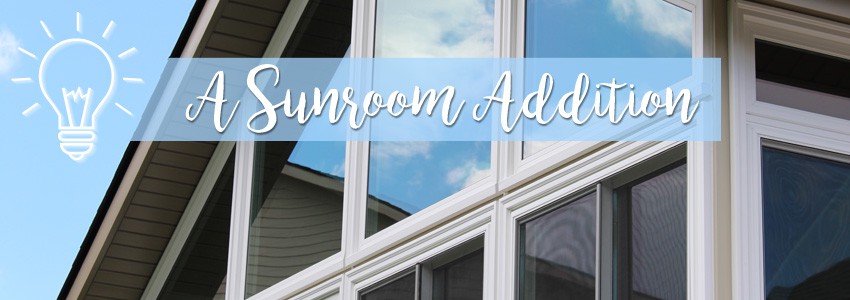
The primary reason why people build additions onto their homes is to gain more living space. Nothing surprising about that. And while any smartly designed and well-constructed addition will provide extra space and increase a home’s value, it doesn’t often have a dramatic impact on the livability of the home or the liveliness of the household. That is, with one exception: a sunroom addition.
Adding a sunroom completely changes the entire feel of a home. It floods the interior space with natural light and provides expansive views that blur the line between indoor living and outdoor space. Sunrooms are magnetically inviting and tend to draw people into the light. And the affect a sunroom has on people is predictable and often audible: Few can enter a sunroom for the first time and not exclaim, “Wow!” Think you’d get that kind of response with a laundry room addition or new guest bedroom? Not likely.
Another often-overlooked benefit of a sunroom is that because of all the glass, the space looks and feels much bigger than it actually is. As a result, you can save a significant amount of money by building a slightly smaller addition, without sacrificing light and views.
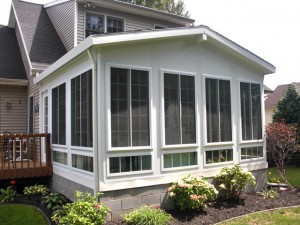 Sunrooms have been around for many years, and their popularity has waxed and waned over the decades. Sunroom architecture, design, and preferred construction methods have changed many times, too. So, before discussing the benefits and features of today’s sunrooms, let me answer one simple question: What exactly is a sunroom?
Sunrooms have been around for many years, and their popularity has waxed and waned over the decades. Sunroom architecture, design, and preferred construction methods have changed many times, too. So, before discussing the benefits and features of today’s sunrooms, let me answer one simple question: What exactly is a sunroom? Sunroom Defined
By strict definition, a sunroom is any room that’s attached to the house and has three walls lined with windows. However, as mentioned earlier, sunroom design has changed over the years, so not everyone uses the same term to define a sunroom addition.For example, in the 1970s a glassed-in room was called a solarium or conservatory. It had an aluminum frame and large glass panels installed in the walls and roof. The room resembled a greenhouse, which was great for growing plants, but not so comfortable for people. All that glass caused the room to get suffocatingly hot in summer and frigidly cold in winter. And the cost to cool or heat the space to a comfortable temperature was prohibitively expensive.
Then, during the 1980s builders moved away from solariums and started building “sunroom” additions that had cathedral ceilings, which allow them to fill the gable-end wall—from floor to roof peak—with windows. But the two sidewalls were conventionally framed and finished with drywall, so it wasn’t really a sunroom as much as a nice, bright room with a single wall of windows.
In certain parts of the country, the term sunroom is used to describe screened-in additions. And while a room lined with insect screening does admit quite a bit of sunlight, it’s not actually a sunroom since it has no glass to block the wind and capture the sun’s energy to warm the space during cold weather. Plus, unlike glass, screens obscure your view of the outdoor scenery.

Today’s Sunroom
The modern sunroom is a brilliant compromise between the hothouse solarium and traditional room addition. It features three walls lined from floor to ceiling with large glass windows. But the roof is conventionally framed and shingled to match the house roof. The result is a bright new space that provides plenty of light and views but is comfortable all year round.Another big advantage to a modern sunroom is that it can be built to complement and blend into your home’s existing architecture. Solariums and screened rooms always appear to be tacked onto the house, as if they were an afterthought. Keep in mind that any room addition—including a sunroom—should look as attractive from the outside as it does from inside.
And if you’d like to capture a bit more sunlight, without overheating the space, you have the option of installing skylights in the roof. Just be sure to install venting skylights, which can be opened to exhaust hot air. Also, consider outfitting the skylights with blackout shades that can be closed to block the sunlight. And to control installation costs, choose skylights that fit in between the roof rafters. That way, you won’t have to reframe the roof to accommodate a wider skylight.
Final Thoughts
Sunrooms should be built with insulated-glass windows, which have two glass panes separated by an insulating air space. If you live in an extremely cold climate, consider triple-pane insulated windows.And be aware that most building codes require the use of tempered safety glass for any window that’s within 18 in. of the floor. Check with the local building department for specific code requirements in your town.
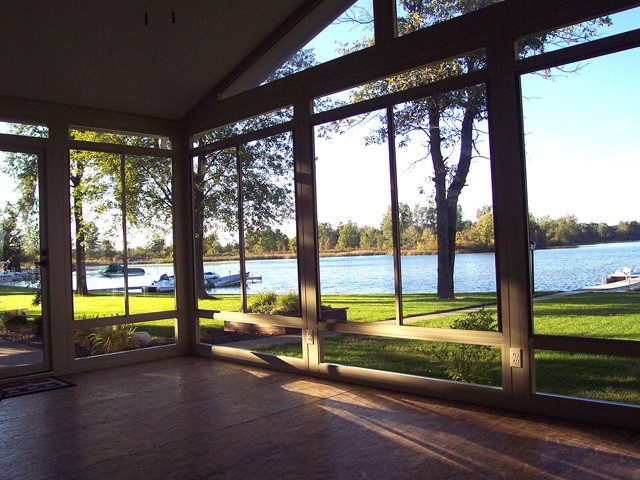
There are various types of windows that can be used in a sunroom, including wood, aluminum, and vinyl. Wooden windows feature the natural beauty and warmth of wood, but they’re relatively expensive and require a certain amount of maintenance to deter rot and water damage.
Aluminum-framed windows are strong, but not particularly attractive. And aluminum is a poor insulator.
Vinyl windows are durable, energy efficient, easy to clean, and virtually maintenance free. Vinyl is most commonly available in white only, but some manufacturers are now offering vinyl windows in limited colors, including beige and brown.
Consider installing a ceiling fan in the sunroom to help circulate the air, especially when the windows are closed. And don’t forget about window treatments — shades, blinds, drapes — which provide privacy and block out the sun on extremely hot days.
For information on Comfort's sunroom options check out the sunroom product page.
Tags
Subscribe to the Comfort Windows & Doors Blog



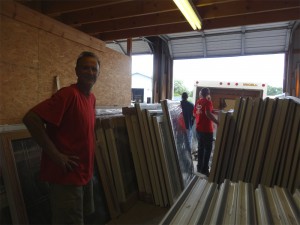

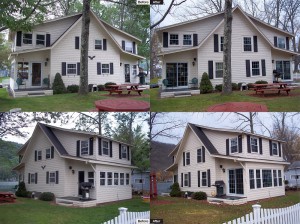

Comments